- Home
- Indian Architecture
- Mughal Architecture
Mughal Architecture
Mughal Architecture:
Quick Facts:
Dynasty: Mughal Dynasty
Country: India
Ruled From: 1526-1540,1557-1857.
Founder: Babur
Capital: Agra, Delhi, Fathepur Sikri
Religion: Sunni Islam
Important Rulers: Babur, Humayun, Akbar, Jahangir, Shah Jahan, Aurangzeb
Some of the best architectural buildings which are world famous and
exist even to this day were built during Mughal period. Mughal Empire gifted
India with one of the best art and architecture. The architecture was the
characteristics of Indo Islamic Persian style which were built between
1526-1857 AD. The founder of Mughal
Dynasty Babur had considerable interest in the development of art and
architecture which was reflected in his grandson Akbar.
The Mughal architecture reached its zenith during Shah Jahan Period
with the construction of world famous Taj Mahal built for his wife. Some of the
important features of the Mughal architecture are its slender minarets, Huge
Domes with arch shaped entrance. Most of the monuments are surrounded by garden
and fountains all around.
The monuments were built either in Marble or Red sandstone with
calligraphic inscriptions all over the monuments. It was usually inscribed in
Persian or Arabic language. Here is some world famous architecture that was
gifted by Mughals
Features of the Mughal Architecture
Mughal architectures has Hindu elements with Persian and Islamic elements. Some of the common features of Mughal architecture include
White Marble and also Red Sandstone.
Jali- latticed screens
Gardens surrounding all the four sides of the building
Mosques with big courtyard
Calligraphic inscriptions in Persian and Arabic languages
Two or four sides
Decorative Chhatris
Jalis and Jharokhas
Agra Fort of Mughal Architecture
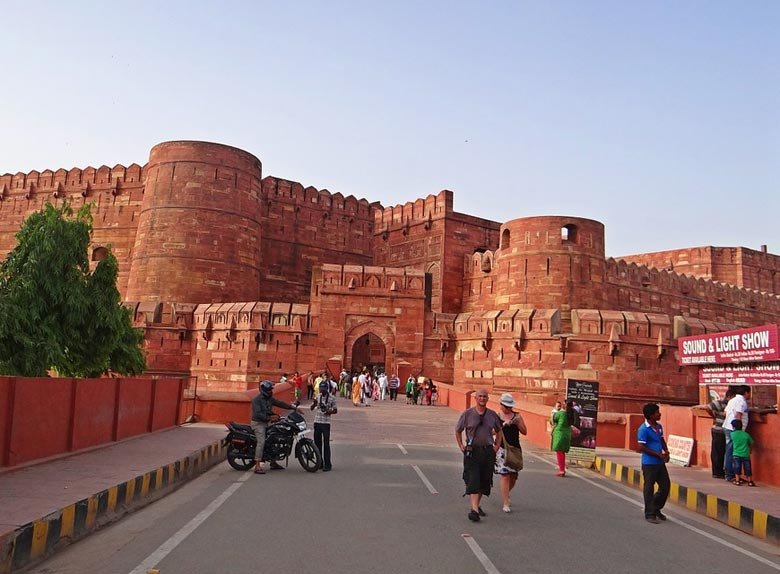
Agra Fort: It was built by Akbar in the year 1573 is one of the
massive and beautiful forts which show the beauty of Mughal architecture. The
fort is one of the UNESCO world heritage site. The construction of the fort was
started in the year 1565 and was completed by 1573. It took almost eight years
and had involved around 4000 workers for the construction of this massive fort.
The fort is open from 6 am to 6 pm for tourists on all the days. It
was the main capital and residence of Mughals until the capital was shifted to
Delhi in 1638 AD. The fort was built in red sandstone and some of the important
places in the fort are Jahangir Hauz, Shah Jahan Mahal, Diwan-I- Aam, Nagina
Masjid, Akbar Mahal and Babur’s Baoli.
Humayun’ s tomb:
It is located in Delhi. It is UNSECO World Heritage Site which was commissioned by Humayun’ s first wife Bega Begum. It is the first monument to be built in red sand stone under the Mughals. The complex has the main tomb of Humayun and is surrounded by beautiful garden all around.
Construction of the tomb was
started in the year 1565 and was completed in the year 1572. The tomb is open
from 8 am to 6pm in the evening on all the days. The nearest airport is Delhi
International airport. For further details about Humayun’ s tomb click the link
here.
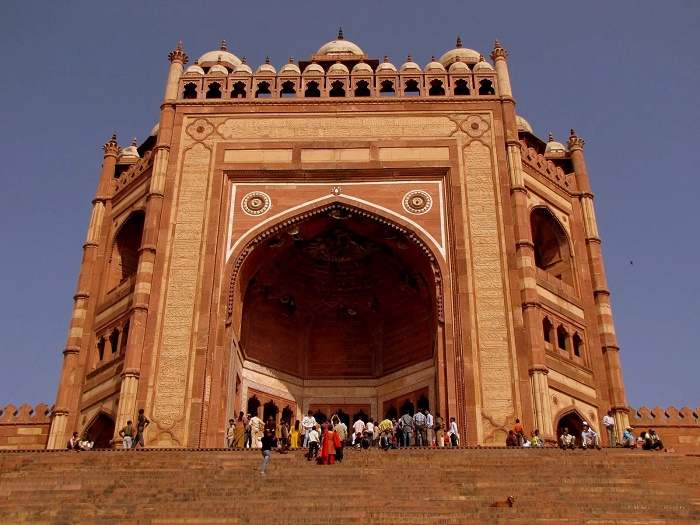
Fathepur Sikri: It is a small town in Agra India. The city was
founded by Akbar in the year 1571 is known as a city of Victory. The place has
number of historical monuments like Buland Darwaza, Jama Masjid, Tomb of Salim
Chisti, Panch Mahal, Palace of Jodha Bai, Diwan-i-Aam and Diwan-i-Khas. After
having successful campaign in Gujarat, Buland Darwaza was built in the honour
of the victory. Fathepur Sikri is a UNESCO World Heritage Site and is open to
visitors from sunrise to sunset.
Diwan-i-Khas was exclusively used by the Emperor and for his other household members. Diwan-i-khas was a plain square building with four Chhatris on the roof. While Diwan-i-Aam was situated on high plinth and had rich carvings on it has a big Verandah. Akbar used to sit on the throne hear and used to have his general Durbar. Jama Masjid was one of the first building to be constructed in Fathepur Sikri complex.
The place is just around 40 km from Agra and the nearest airport is
Agra airport. The nearest railway station is Fathepur Sikri Railway station.
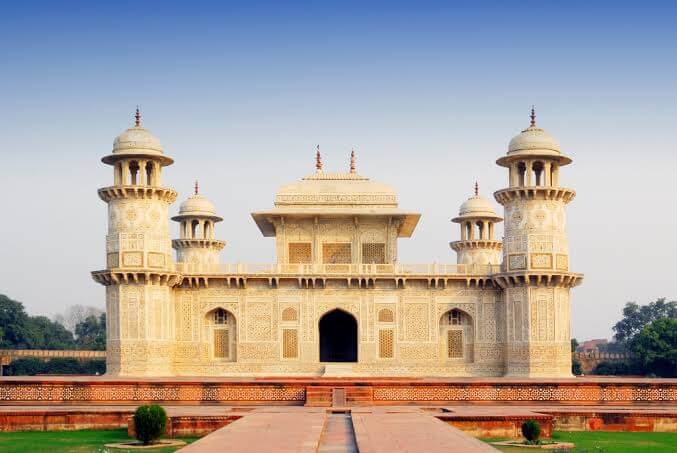
Tomb of Etmauddaula:
It is a mausoleum present in the city of Agra India. It is located
on the eastern bank of Yamuna River and is considered as the draft of Taj
Mahal. It is the tomb of Mirza Ghiyas Beg and his wife Asmat Beghum. The tomb
was commissioned by Nur Jahan who was the wife of Shah Jahan. Mirza Ghiya Beg
was father of Nur Jahan. The main tomb built in white marble is beautifully
present in the middle of the garden. The tomb is pen to visitors from sunrise to
sunset on all days.
Akbar’s Tomb:
Akbar’s son Jahangir built Akbar’s tomb in Sikandra Agra. During his
life Akbar had selected the place for his tomb. The construction was started in
the year 1605 and was completed in 1613. The mausoleum is built in red
sandstone with four minarets. The place is open on all days from sunrise to
sunset. The nearest airport is Agra airport and the nearest railway station is
Agra Cantt. Agra has many monuments built during Mughal Period. One can plan
well and visit all the places without missing any in Agra.
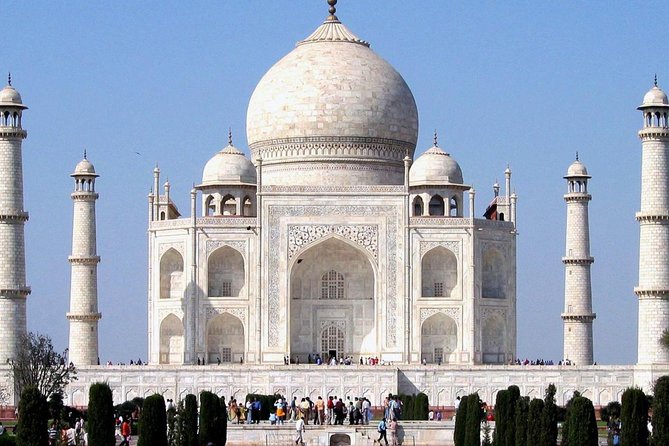
Taj Mahal:
Another world famous monument in Agra is Taj Mahal. It was built by
Shah Jahan for his beautiful wife Mumtaz. It is built in Ivory white marble and
was commissioned in the year 1632 and was completed in the year 1653. It took
close to 23 years for constructing the most beautiful and magnificent Taj
Mahal. The tomb is surrounded by beautiful garden all around. The mausoleum was
completed by 1643 but the surrounding garden and buildings were completed after
10years.
It was designated as UNESCO World Heritage Site in the year 1983 as “the Jewel of Muslim art in India”. It is one of the most important tourist destinations in India. Close to 8 million people worldwide visit to see this magnificent monument.
The best time to visit is during the sunrise when the
orange light of sun falls on the white marble monument. Taj Mahal is open from
sun rise to sunset but is closed on Friday. The nearest airport is Agra airport
and railway station is Agra Cantt.
Red Fort in Delhi:
This Mughal masterpiece was constructed during the period of Shah Jahan. Red Fort is one of the most historic iconic tourists place in Delhi. The construction was started in the year 1639 and was completed by 1648. The architect of this massive Mughal monument was Ustad Ahmad Lahori. Some of the important structures include Diwan-i-aam, Diwan-i- khas, Lahori Gate, Naubat Khana, Chhatta Chowk, Mumtaz Mahal, Rang Mahal, Khas Mahal, Baoli, Hira Mahal and Hayat Baksh Bagh.
Every year the Prime Minister of India hoist the tricolour Flag from
Red Fort on Indian Independence Day and give a speech from the front gate. The
timings are 9:30 am to 4:30 on all days except on Mondays. The nearest airport
is Delhi airport and nearest metro station is Chandni Chowk metro station.
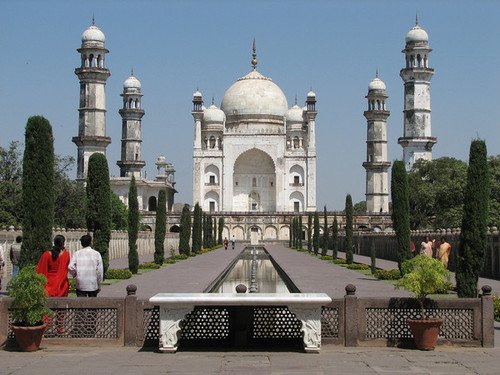
Bibi Ka Maqbara:
It is located in Aurangabad in Maharashtra, India. In was commissioned by Aurangzeb in the year 1660 in the memory of his first wife Dilraus Bano Begum. It is quiet similar to Taj Mahal in Agra. Due to its resemblance to Taj Mahal it is also known as Taj of the Deccan. The mausoleum is typical Mughal architecture with garden on all four sides and with small minarets all around.
The tomb has beautiful inscriptions and Jali windows all around. The
mausoleum has Dome on the top which has beautiful flower designs all around.
The structure is in the form of a hexagon and the mortal is kept below the
ground level surrounded by octagonal Jali windows.
Tomb of Safdarjung:
It is a marble mausoleum built in the year 1754 and is located in New Delhi. This tomb was built for the Mughal ruler Safdarjung who ruled over Awadh. This is the last monumental tomb garden of the Mughals. The Mausoleum is at the centre and it is surrounded by garden. The complex also has three dome mosque.
The tomb is open on all days from sunrise to sunset. The nearest
metro station is Jor Bagh and the nearest airport is Indira Gandhi
International airport Delhi.
Tomb of Salim Chisti:
This tomb is considered as one of the best examples for Mughal
architecture was built around 1580. It is the burial place of sufi saint Salim
Chisti who was a descendant of Khwaja Moinuddin Chisti. It is considered as a
very Holy place and many people come here to fulfil their wishes. It is located
in Fathepur Sikri and built in white marble and red sandstone. It is open on
all days from 6 am to 5:30 pm.
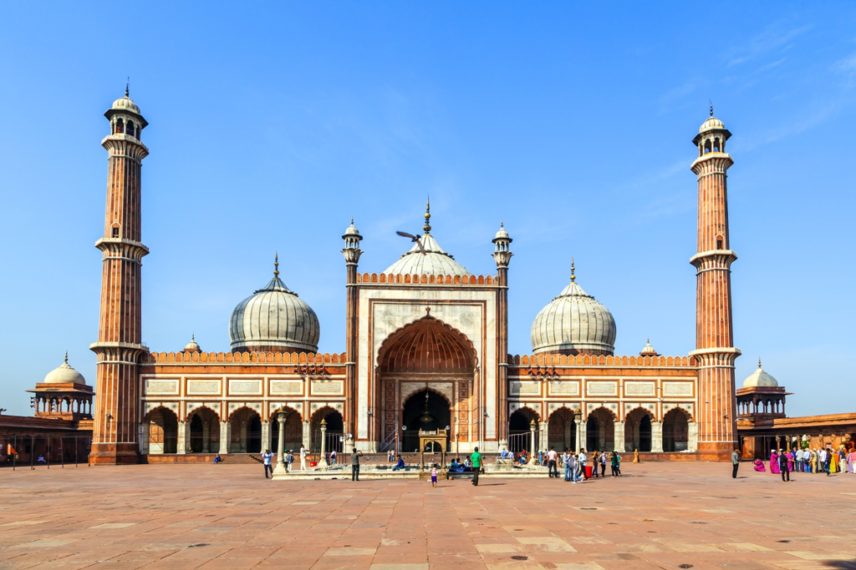
Jama Masjid Delhi:
The Masjid was built by Mughal Emperor Shah Jahan between 1650-1656. It is one of the biggest mosques located in Delhi. The mosque has three gates four towers and two forty metre tall minaret. The mosque is built in red sand stone and the eastern gate of the mosque is closed during weekdays. The courtyard is so big and huge that it can accommodate up to 25,000 people for doing prayers.
Every year thousands of Muslims visit the place during Eid to offer
their prayers. The mosque is jointly maintained by Delhi Wakf board and Jama
Masjid committee under the leadership of Shahi Imam. The mosque is open to
tourists from 7:30 am to noon and again from 1:30 pm to 6 pm to offer prayers.
The domes are capped with golden ornaments and two large minarets with 40 ft in
height are on either side of the Dome.
Please share your thoughts on Mughal architecture with us by clicking the link here.
Also check out
Related Pages
European Colonial Architecture
Update on coronavirus in India
Affiliate Disclosure:
If you make any purchase via a link on this site, I may receive a small commission with no added cost to you.


